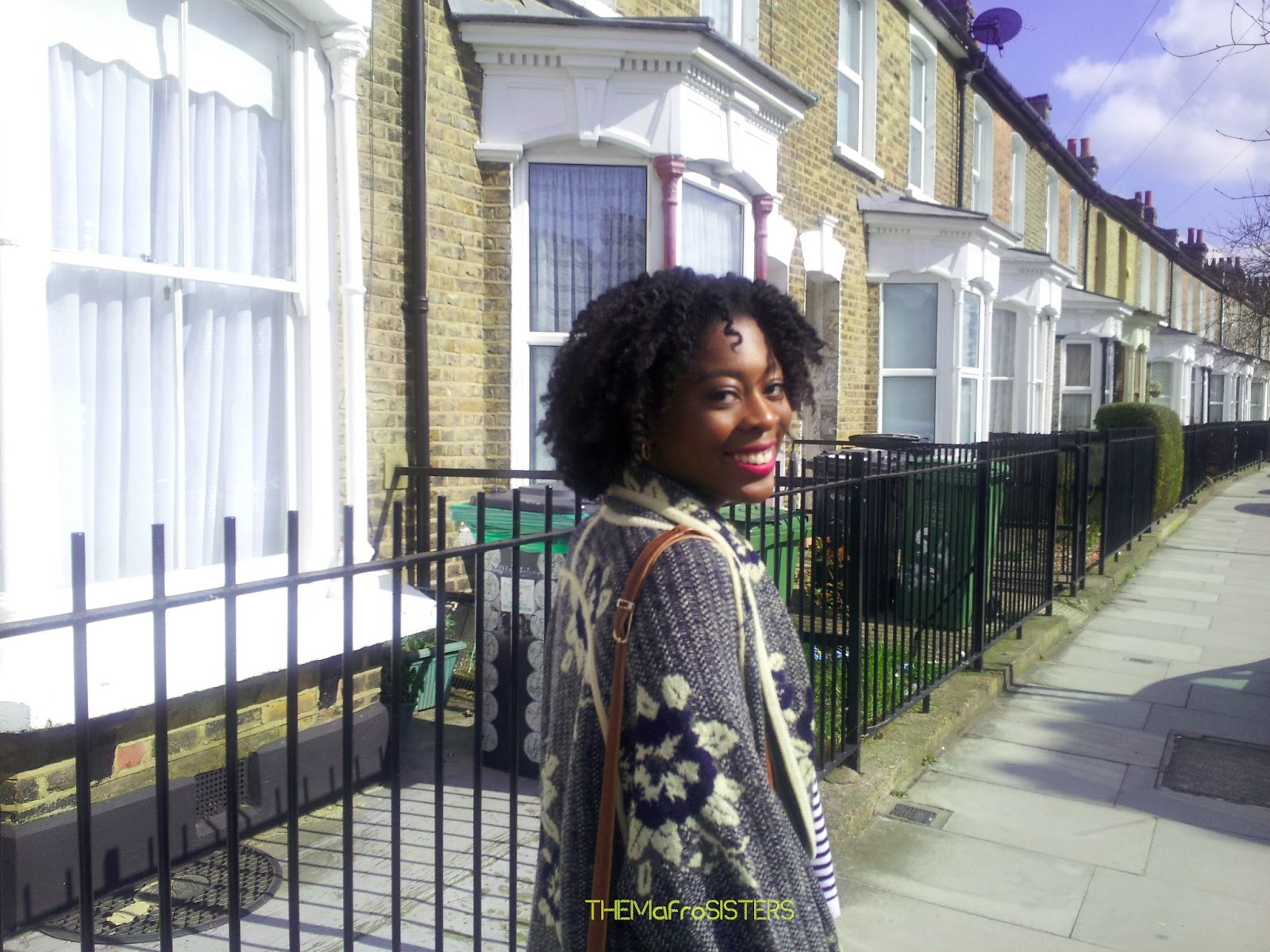So, Zainab told you what she loved about being natural last time. But let’s be honest she’s still in the honeymoon stage, it’s not all sunshine and lollipops! I’ve only been properly natural (no weaves or straightening and all the heat-damaged bits cut off) for a year and have learnt some lessons about being natural! Here’s some stuff I don’t like:
You look about two
Now that I am natural, people constantly think I’m 14 (even with make-up on). I’m not even allowed to buy a lottery ticket without ID anymore! I’m 22! Case in point: my older sister (who is in her late twenties) keeps being asked out by secondary school boys. For some reason, people associate youth with natural hair.
People look at your hair rather than look at you
When I talk to some people, I can see their eyes darting up and down as they look at me then look at my hair then look at me again. I feel like saying ‘Hey! I’m down here! Look at my face! My mouth is lower down!’ Subsequently I get self-conscious that there must be something in my hair, which leads to…
Things get stuck in your hair
Stuff will get stuck in your hair. I am dreading summer purely because of the rise of the insect population. Random bobby pins, bugs, tree branches, umbrellas, Velcro, these are some of the things that have been caught or I have found in my hair. Grr!
Your BF will put his hands in your hair
Talking about things in your hair, for some reason men love to touch women’s scalps. Maybe because they’ve been told for so long that they can’t do it, when they have the opportunity they feel like they have to take it and run. My BF likes to help me (well he thinks he’s helping) fluff my hair in the morning and he likes to touch my hair whenever he can. Forget about having a frizz-free twist out if you have a boyfriend!
On top of that… so will everyone else
Tbh, I don’t mind people touching my hair (if you politely ask first and I know you), I understand that people may not get the opportunity to touch natural afro hair ever again. But DO NOT reach out to touch unannounced (especially if I don’t know you) and DO NOT scrunch my hair from the root (African aunts are particularly fond of the latter- especially whilst exclaiming ‘Your hair is so TOUGH TOUGH TOUGH!’).
Short Hair? They don’t care!
So you’ve decided to go natural, you take the leap of doing the big chop and have super short hair. I’ll tell you this now, no-one will be interested until your hair grows out and is big and long. People will even give back-handed compliments like, ‘You’re so brave! I could NEVER do that’ or ‘You look nice, but I couldn’t go natural, women with natural hair look so… butch.’ Wait about a year then people will start saying, ‘I love your hair!’, ‘I’m gonna go natural too, I want my hair to look like yours!’
New things to worry about
I never worried about heat damage before, now I’m too scared to even blow-dry my hair! I’m always worried that I should be doing something to my hair to make it grow or protect the ends or keep it moisturised. I remember when my hair and I used to have a simple relationship :(
You trust NO hairdresser
I haven’t been to a hairdresser since August 2011 and I probably won’t go again for a very very long time (unless I colour my hair, I don’t think I could do that alone :S).
Always looking the same
When my hair was short (Zainab also has this problem) there were only a handful of styles that I could do, so I always looked the same. However, when I had short hair, I didn’t know about the wealth of information available so always looking the same didn’t really bother me. But now that Zainab has Youtube and there are loads of bloggers and vloggers with super long hair and beautiful hairstyles it makes you so envious. This leads to my next point…
Impatience about hair growth
Before I went natural I was content thinking that my hair would never grow past my shoulders. But now that I know the possibilities, I just want my hair to grow long and now damn it! If my hair isn’t tucked away, I’m always tugging on it to see how long it’s grown. Length checks are my crack cocaine, I just can’t help it!
People not understanding that you don’t relax your hair
I don’t get what’s so difficult for people to understand about going natural. I like my hair like this! For example, this is a conversation I had with someone at work once:
Guy: So, why is your hair like that? Are you in between weaves or something?
Me: …No…This is my natural hair… I stopped getting weaves or relaxing my hair.
Guy: (Looking at me with squinted eyes) So you don’t relax your hair?! Or use a weave?!
Me: No.
Guy: Really?! Never?!
Me: No, I don’t feel the need to.
Guy: (Still squinting) Wow… you must be some special kind of girl…
If that’s not an odd reaction I don’t know what is! I’ve also had people accuse me of being bald (because I was wearing a headscarf, so must be covering something up) and I'm always accosted in a certain high street by hairdressers offering to do my hair. Leave me alone! I like my hair like this! Geez!
Are there any things you guys don’t like? Tell me I’m not alone!!
Maz xx














